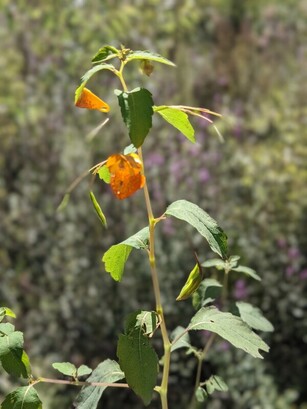CONSERVATION CORNER
A weekly blog for all things conservation
 by Nate Reagle It’s pretty safe to assume you’re familiar with groundhogs, especially considering our famous one in the limelight every February. While normal groundhogs, also known as woodchucks, lack the mystical power to predict the weather, they are still fascinating creatures. As members of the squirrel family, groundhogs have good balance and can climb and jump. It is not uncommon to see them in bushes, on stumps, or even on fences. Groundhogs are the largest Pennsylvania member of the squirrel family, but still retain some of the agility of tree-dwelling squirrels. Although we often associate groundhogs with their burrows and grassy meadows, they also have surprising flexibility when it comes to habitat and lifestyle. They feel quite at home in a back yard or brushy, woodland edge.
Their burrows are beneficial to other wildlife, offering escape cover, but draw the ire of farmers. These holes are a hazard to cattle, people, and equipment. Groundhogs use their burrows to escape predators and for hibernation. When alarmed, they will often vocalize a shrill whistle, then seek their burrow. The alarm whistle gives them another common name: whistle pig. A groundhog’s diet also causes angst with gardeners. While they will feed on grass and forbs, they will also eat crops and fruit. Their diet can shift with seasonal availability to gain as much weight as possible to make it through the winter. During hibernation, a groundhog’s body temperature and heart rate will drastically decline. In spring, males emerge first and scuffle prior to females making an appearance. After mating, a litter of three to four young emerge about a month after being born helpless. A groundhog is lucky if it lives eight years, given the abundance of predators and hazards from humans and their pets. A unique condition that can occur with groundhogs and other rodents is misaligned teeth. This malady makes it impossible to keep their ever-growing teeth short. The result is teeth that continue to grow until the groundhog starves, or the teeth curl and grow inward. Neither outcome is pleasant for the unfortunate critter. During this time of year, many people focus on our famous groundhog and celebrate his meteorological forecasting “ability”, but it’s also a good time to consider the species’ prominent role in our natural heritage and ecosystem. It’s also encouraging to think that the next time you see one in the wild, it will probably be spring, regardless of Phil’s prognostication!
0 Comments
Leave a Reply. |
AuthorsVarious staff at the Bradford County Conservation District Archives
July 2024
Categories
All
|
|
Bradford County Conservation District
Stoll Natural Resource Center 200 Lake Road, Suite E | Towanda PA 18848 Phone: (570)-485-3144 |
